I never got into the NES version, but when I was in school, one summer I attended a band camp on an empty college campus. The dorm lobby had a few arcade machines, and one of them was Track & Field. That was where I learned about all the secrets in the arcade version. It's too bad the DS version of Track & Field wasn't very good. It had a lot of great Konami character cameos in it, including Sparkster, Rumble Roses, and even Kid Dracula!
Track & Field Review Rewind
|
|
See PixlBit's Review Policies

On 08/05/2016 at 09:00 AM by Jamie Alston Let the games begin. |

A great time for the gamer who likes to earn their victories.
Well, it's that time again-- the time that comes around every 4 years when hundreds of athletes from around the world compete in some of the most physically demanding competitions ever. Each athlete is highly skilled in their discipline of sport, but only the best get the gold. Of course, I'm talking about the 2016 Summer Olympics taking place in Rio de Janeiro today. With this exciting occasion just hours away, now is as good a time as any to take a look at Track & Field from Konami.
The game was originally featured in the arcades in 1983. Requiring rapid button presses and nimble dexterity, the game was nearly as demanding as the athletic events it was imitating. Over the next several years, the game would go on to be ported to quite a few home computers and video game consoles. In particular, the NES got a piece of the action when Track & Field was ported to the system in 1987. Out of all the home console releases, this was the most well-received version.
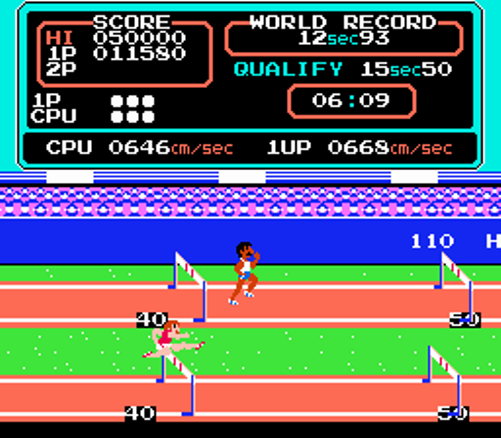
The game consists of 8 athletic events-- 100 Meter Dash, Long Jump, 110 Meter Hurdles, Javelin Throw, Skeet Shooting, Triple Jump, Archery, and High Jump. This differs from the original arcade version which only had six events. Furthermore, the Hammer Throw event in the arcade version was absent from the NES port. It was replaced instead with the Skeet Shooting and Archery events. Usually, I’m the first to complain when a home console port ditches original features from its source material, but it actually worked to the game’s benefit in this case since the two previously mentioned events were added in place of it. It helped to breathe a little more life into a game that was starting to show its age by the time it hit the NES.
As far as the controls are concerned, they're deceptively simple. You’ll need to use only two buttons during the entire game-- the A button for running/shooting and any key on the directional pad for jumping. However, mastering the controls for the various events requires careful timing and sturdy fingers. For starters, any event involving running (which is most of them) requires the player to rapidly tap the A button to gain speed, which wreaked havoc on my thumb. I didn’t fare much better using the index finger either.
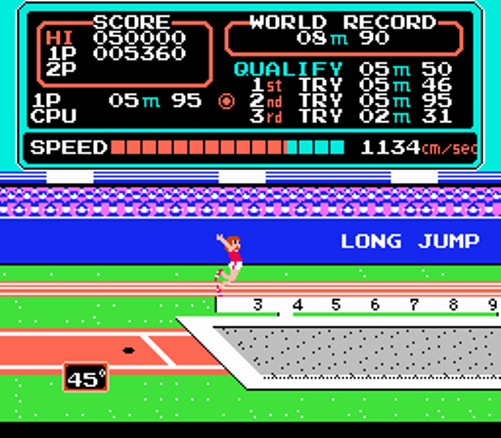
The goal in each event is to meet the minimum qualifying time or score requirements. If you’re feeling particularly bold, you can attempt to beat the world record displayed as well. The long jump, triple jump, javelin throw, and high jump events require the additional action of angling your jump/throw with d-pad in addition to the previously mentioned button mashing. The high jump event can be especially tricky because, not only do you need to jump over the bar, but you’ll also need to adjust the angle of your leap at least twice in mid-air.
The combination of these requirements makes it just possible enough to make the qualifying cut. The dexterity needed is taxing enough that, should you happen to beat the best record for any of the four events mentioned above, onlookers might feel compelled to bow down to your awesome god-like powers. Or you could just use a turbo-enabled controller and accomplish the equally awe-inspiring task.
In the skeet shooting event, clay pigeons are fired from both sides of the screen and you have to shoot them when they’re within either of the two targeting reticles in the middle of the field. This is by far one of the easiest events of the other eight since the target boxes automatically track the flying clay pigeons and it doesn’t require rapid button presses. Instead, it’s more about the rhythm of pressing the button. It is still moderately challenging because the game will try to get you off rhythm after you’ve gotten used to the pattern.
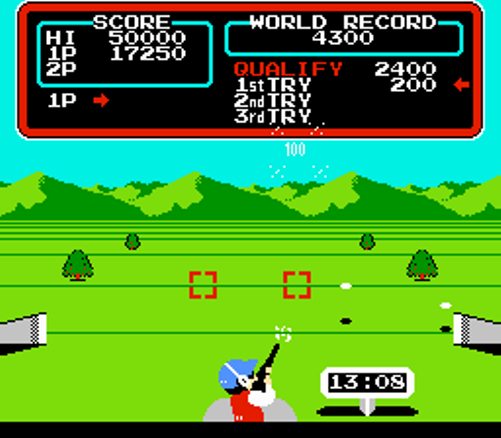
At first, each clay pigeon launches from the right side of the screen, but they will occasionally launch from the left side in between your regular shots, causing you to take your eye off the right target box just long enough to possibly break your concentration if you don’t adjust quickly enough. Furthermore, the controls in this event don’t follow typical gaming logic.
Without the benefit of the instruction manual, most first-time players would expect the A & B button to correspond to each target box respectively. However, while the A button does correspond to the right side, firing to the left is controlled by the buttons on the directional pad. It took me a while to figure that out because it just didn’t follow the line of reasoning I’m used to in general.
The archery event is another of the less demanding events in the game and is one of my favorites. As the target moves from the top to the bottom of the screen, you press the A button to shoot the arrow. The length of time the button is held determines how high on the target you’ll hit. You’ll also have to factor in the wind direction displayed at the bottom of the screen. I’ll just go ahead and admit that I do get a particular sense of satisfaction when I land a perfectly-released shot on the bullseye. The chime that plays after landing the shot just feels right.
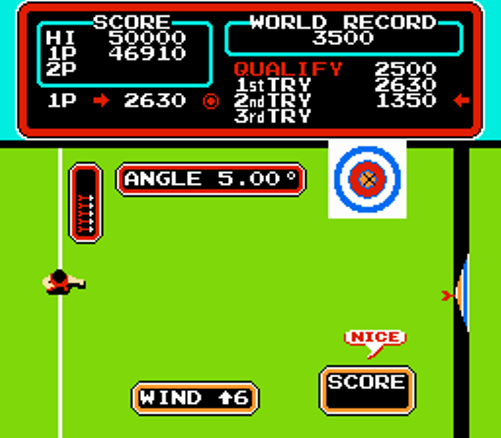
The game also has its fair share of odd, yet humorous “extras” that make the events at least somewhat worth the effort beyond the need to merely qualify for the next round. Throwing a javelin at the maximum angle (and enough speed) plucks a UFO from the sky. Hitting a bullseye once and on the correct target in an archery round changes the next target to a cat with an apple on its head.
Scoring a perfect round in the skeet shooting event causes a UFO to fly by. If you shoot it in the left target box, a crow will then appear, giving you a chance to score extra points. Such quaintness gives Track & Field extra personality not seen in the more straightforward Olympic sports games out there. And it doesn’t hurt that the game includes an abbreviated 8-bit rendition of the “Chariots of Fire” theme on the title screen.
All things considered, Track & Field delivered a fairly well-simulated variety of real-world athletic events. Besides playing World Class Track Meet on the Power Pad, the controls in this game were about as close as you could get to feeling the rigors of Olympic sports on the NES. Sure, it could have been slightly more intuitive when playing the skeet shooting rounds, but it’s nothing that a little practice won’t fix. Also, if you don’t enjoy playing games that require rapid button mashing, then you’ll definitely want to invest in a controller with turbo functionality. However, if you enjoy a little hard work in short bursts, then Track & Field is a game that is sure to please.







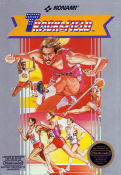


Comments